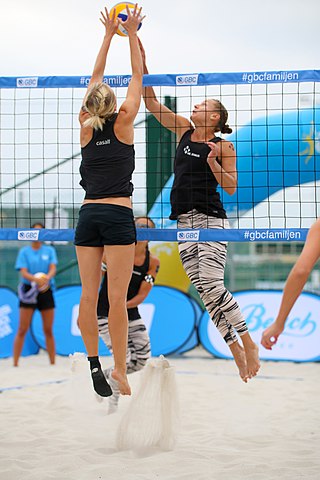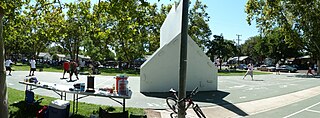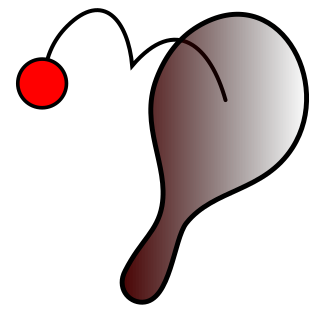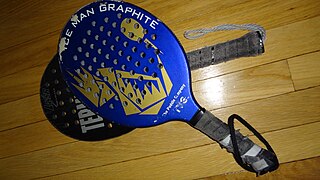Other governing bodies
There have been many attempts to package paddleball as a sport. However, attempts to organize it have had mixed results. Founded in 1960, the original U.S. Paddleball Association was the inspiration of doubles champion and founder, Christopher Lecakes, and lasted well into the 1970s. In the late 1960s, the American Paddleball Association (APA) was organized, only to be challenged by the Paddleball Players Association in 1974. In the 1980s, the PPPA, founded by Ray Gaston, became the dominant governing body, and small community-based organizations like the One Wall Paddleball Association founded by Murry "DA K" Kushner continued efforts to push the sport forward. In the early 1990s, the National Paddleball Association, founded by Michael G. Magnaldi, George Medici and Linda Sales, picked up the torch from the prior organizations. The NPA officially ceased operations in early 2006. All prior organizations eventually became inactive. The APA was reorganized in the late 1990s by paddleball legend Howard Hammer and shortly thereafter became inactive again. In 2005, the United States Paddleball Association (USPA) was reborn, this time headed by Henry Marquez and beginning with an authorized revision of Christopher Lecakes' original one pall Paddleball rules. The USPA remains active in overseeing the sport's promotion and application of its original rules.
A number of factors prevent paddleball from becoming more of a national sport, notwithstanding the lack of walls outside of the New York region. Part of the problem stems from the experience in NYC with annual tournaments, which when sponsored by companies such as Budweiser (in the 80s) fell victim to forces on tournament courts that turned away further corporate involvement. Another is the speed of the game, which, barring technological advancement, prevents televising tournaments. The ball moves too fast and the court is too small for following the action during a live game. Without the revenue stream from television, the game is relegated to member fees to enter tournaments which are sponsored locally.

Nine-ball is a discipline of the cue sport pool. The game's origins are traceable to the 1920s in the United States. It is played on a rectangular billiard table with pockets at each of the four corners and in the middle of each long side. Using a cue stick, players must strike the white cue ball to pocket nine colored billiard balls, hitting them in ascending numerical order. An individual game is won by the player pocketing the 9-ball. Matches are usually played as a race to a set number of racks, with the player who reaches the set number winning the match.

Racquetball is a racquet sport and a team sport played with a hollow rubber ball on an indoor or outdoor court. Joseph Sobek invented the modern sport of racquetball in 1950, adding a stringed racquet to paddleball in order to increase velocity and control. Unlike most racquet sports, such as tennis and badminton, there is no net to hit the ball over, and, unlike squash, no tin to hit the ball above. Also, the court's walls, floor, and ceiling are legal playing surfaces, with the exception of court-specific designated hinders being out-of-bounds. Racquetball is played between various players on a team who try to bounce the ball with the racquet onto the ground so it hits the wall, so that an opposing team’s player cannot bounce it back to the wall.

Squash is a racket-and-ball sport played by two or four players in a four-walled court with a small, hollow, rubber ball. The players alternate in striking the ball with their rackets onto the playable surfaces of the four walls of the court. The objective of the game is to hit the ball in such a way that the opponent is not able to play a valid return. There are about 20 million people who play squash regularly world-wide in over 185 countries. The governing body of squash, the World Squash Federation (WSF), is recognized by the International Olympic Committee (IOC), but the sport is not part of the Olympic Games, despite a number of applications. Squash was shortlisted event for the 2028 Summer Olympics in Los Angeles. The Professional Squash Association (PSA) organizes the pro tour.

Dodgeball is a team sport in which players on two teams try to throw balls and hit opponents while avoiding being hit themselves. The objective of each team is to eliminate all members of the opposing team by hitting them with thrown balls, catching a ball thrown by an opponent, or inducing an opponent to commit a violation, such as stepping outside the court.

Beach volleyball is a team sport played by two teams of two or more players on a sand court divided by a net. Similar to indoor volleyball, the objective of the game is to send the ball over the net and to ground it on the opponent's side of the court. Each team also works in unison to prevent the opposing team from grounding the ball on their side of the court.

Real tennis – one of several games sometimes called "the sport of kings" – is the original racquet sport from which the modern game of tennis is derived. It is also known as court tennis in the United States, formerly royal tennis in England and Australia, and courte-paume in France. Many French real tennis courts are at jeu de paume clubs.

American handball, known as handball in the United States and sometimes referred to as wallball, is a sport in which players use their hands to hit a small, rubber ball against a wall such that their opponent(s) cannot do the same without the ball touching the ground twice or hitting out-of-bound. The three versions are four-wall, three-wall and one-wall. Each version can be played either by two players (singles), three players (cutthroat) or four players (doubles), but in official tournaments, singles and doubles are the only versions played.

POP tennis is a racket sport adapted from tennis and played for over a century. Compared to tennis, the court is smaller, has no doubles lanes, and the net is lower. Paddle tennis is played with a solid perforated paddle, as opposed to a strung racquet, and a lower pressure tennis ball.
The American Poolplayers Association (APA) is a governing body for amateur pool competition in the United States. The APA conducts pool leagues and tournaments in the disciplines of eight-ball and nine-ball with a unified ruleset. The organization was founded in 1981 by professional pool players Terry Bell and Larry Hubbart, with roots dating back to the National Pool League (NPL), founded in 1979. The APA bills itself as the largest pool league in the world with a membership of nearly 250,000 players in the United States, Canada, Japan, and Singapore. The organization franchises its local league operations worldwide; some of these league operators are former professional pool players, including Ewa Laurance and Jeanette Lee. The APA is headquartered in Lake St. Louis, Missouri.

Pickleball is a racket or paddle sport in which two (singles) or four (doubles) players hit a perforated, hollow plastic ball with paddles over a 34-inch-high (0.86 m) net until one side is unable to return the ball or commits an infraction. Pickleball is played indoors and outdoors. It was invented in 1965 as a children's backyard game in the United States, on Bainbridge Island in Washington state. In 2022, pickleball was named the official state sport of Washington.
Traditionally, tennis is played between two people in a singles match, or two pairs in a doubles match. Tennis can also be played on different courts, including grass courts, clay courts, hard courts, and artificial grass courts.

Padel, sometimes called padel tennis, is a racket sport of Mexican origin, typically played in doubles on an enclosed court slightly smaller than a doubles tennis court. Although padel shares the same scoring system as tennis, the rules, strokes, and technique are different. The balls used are similar but with a little less pressure. The main differences are that the court has walls and the balls can be played off them in a similar way as in the game of squash and that solid, stringless bats are used. The height of the ball being served must be at or below the waist level.

For the sport called "beach paddleball", see Matkot. For other sports called "paddleball", see Paddleball (sport).

Paddle ball is a one-person game played with a paddle and an attached ball. Using the flat paddle with the small rubber ball attached at the center via an elastic string, the player tries to hit the ball with the paddle in succession as many times as possible.
Charles Edgar Brumfield is an American attorney and former professional racquetball player as well as a noted paddleball player. For much of his professional racquetball career, Brumfield was the marquis player for Leach Industries, the leading manufacturer of racquetball rackets at the time. Leach produced several Brumfield signature rackets including the "Graphite Brumfield". For a brief time, Brumfield had his own sports brand label, which marketed rackets and sports apparel.

Four wall paddleball, or paddleball, is a popular court sport in the Upper Midwest of the United States, on the West Coast of the U.S. and in the Memphis, Tennessee area. It is played with a paddle and small rubber ball on a standard handball or racquetball court, with similar rules to those sports.
Bud Muehleisen is a dentist in San Diego, California, and a racquetball and paddleball player. A left-handed player, "Dr. Bud" Muehleisen was the first person inducted into the Racquetball Hall of Fame, and is considered the best racquetball player and the best paddleball player of the 1960s era, and one of the best finesse players in the history of either game. The description of his career at the Racquetball Hall of Fame reads:
'Dr. Bud' Muehleisen has sometimes been called the most influential man in racquetball. He began playing paddleball in 1962, won four national titles, then took up paddle rackets in 1969, edging out Brumfield to win one of the first national championships in the sport that would become racquetball. Bud served on the IRA board of directors for seven years as the first Rules Committee chairman and was instrumental in the formation of the game's first rules. He won an unprecedented 41 national titles, was a coach and teacher, a regular contributor of instructional material to early magazines and worked with most of the major equipment manufacturers in developing racquets, balls and other products.

Paddle-ball is a sport that is played on a court half the size of a tennis court, using paddle racquets amongst two players or in doubles. The paddle is made of wood or graphite and has holes for less air friction.
Platform tennis is derived from tennis, developed in 1928 at Fox Meadow Tennis Club in Scarsdale, New York by James Cogswell and Fessenden Blanchard.
This glossary provides definitions and context for terminology related to, and jargon specific to, the sport of pickleball. Words or phrases in italics can be found on the list in their respective alphabetic sections.

















